Olivier Alata
Conformal Online Learning of Deep Koopman Linear Embeddings
Nov 16, 2025Abstract:We introduce Conformal Online Learning of Koopman embeddings (COLoKe), a novel framework for adaptively updating Koopman-invariant representations of nonlinear dynamical systems from streaming data. Our modeling approach combines deep feature learning with multistep prediction consistency in the lifted space, where the dynamics evolve linearly. To prevent overfitting, COLoKe employs a conformal-style mechanism that shifts the focus from evaluating the conformity of new states to assessing the consistency of the current Koopman model. Updates are triggered only when the current model's prediction error exceeds a dynamically calibrated threshold, allowing selective refinement of the Koopman operator and embedding. Empirical results on benchmark dynamical systems demonstrate the effectiveness of COLoKe in maintaining long-term predictive accuracy while significantly reducing unnecessary updates and avoiding overfitting.
Mean Oriented Riesz Features for Micro Expression Classification
May 13, 2020
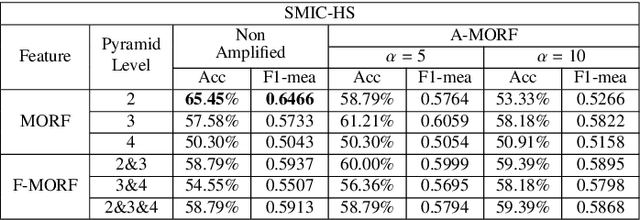
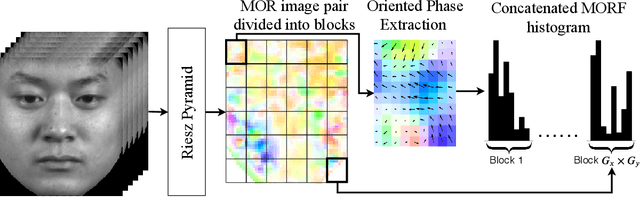
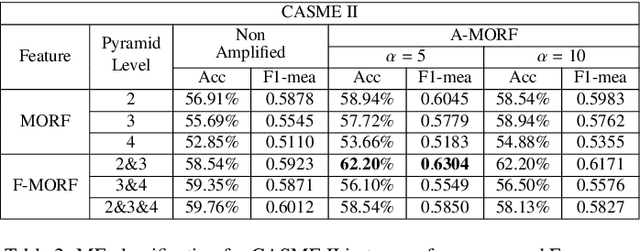
Abstract:Micro-expressions are brief and subtle facial expressions that go on and off the face in a fraction of a second. This kind of facial expressions usually occurs in high stake situations and is considered to reflect a human's real intent. There has been some interest in micro-expression analysis, however, a great majority of the methods are based on classically established computer vision methods such as local binary patterns, histogram of gradients and optical flow. A novel methodology for micro-expression recognition using the Riesz pyramid, a multi-scale steerable Hilbert transform is presented. In fact, an image sequence is transformed with this tool, then the image phase variations are extracted and filtered as proxies for motion. Furthermore, the dominant orientation constancy from the Riesz transform is exploited to average the micro-expression sequence into an image pair. Based on that, the Mean Oriented Riesz Feature description is introduced. Finally the performance of our methods are tested in two spontaneous micro-expressions databases and compared to state-of-the-art methods.
Wavelet-based Reflection Symmetry Detection via Textural and Color Histograms
Jul 22, 2017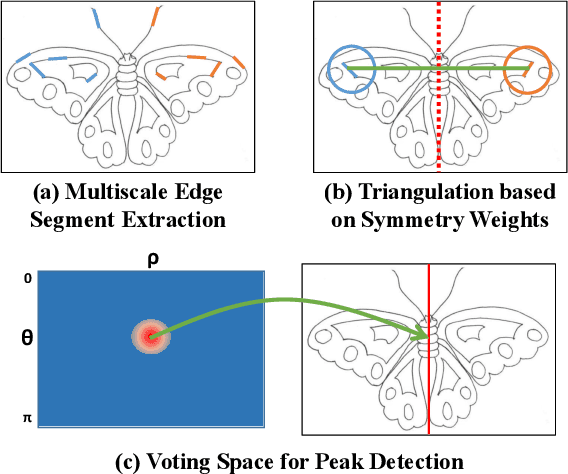


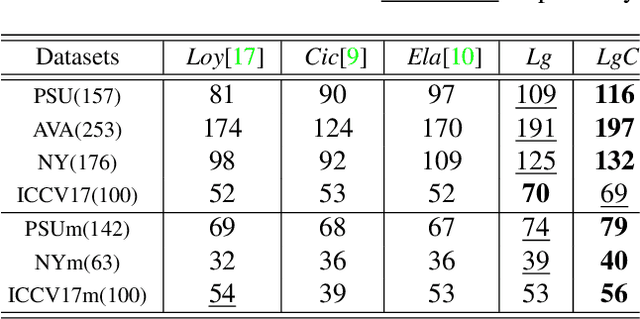
Abstract:Symmetry is one of the significant visual properties inside an image plane, to identify the geometrically balanced structures through real-world objects. Existing symmetry detection methods rely on descriptors of the local image features and their neighborhood behavior, resulting incomplete symmetrical axis candidates to discover the mirror similarities on a global scale. In this paper, we propose a new reflection symmetry detection scheme, based on a reliable edge-based feature extraction using Log-Gabor filters, plus an efficient voting scheme parameterized by their corresponding textural and color neighborhood information. Experimental evaluation on four single-case and three multiple-case symmetry detection datasets validates the superior achievement of the proposed work to find global symmetries inside an image.
Multiple Reflection Symmetry Detection via Linear-Directional Kernel Density Estimation
Apr 21, 2017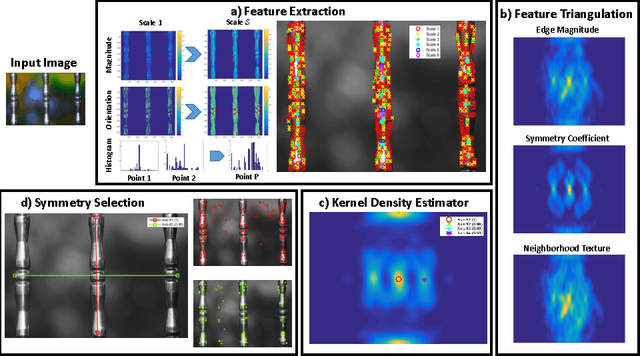
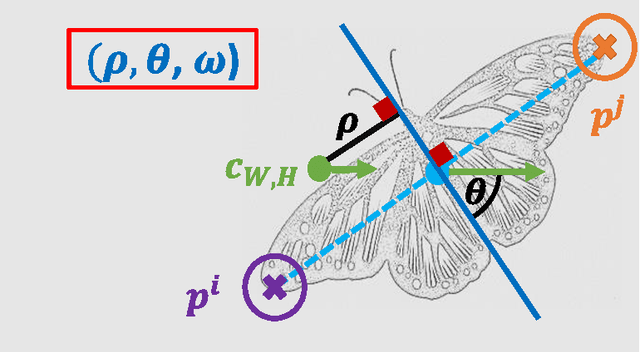
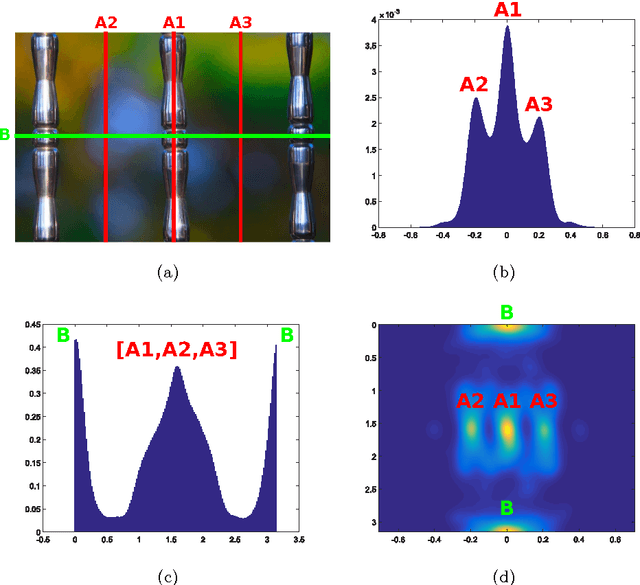
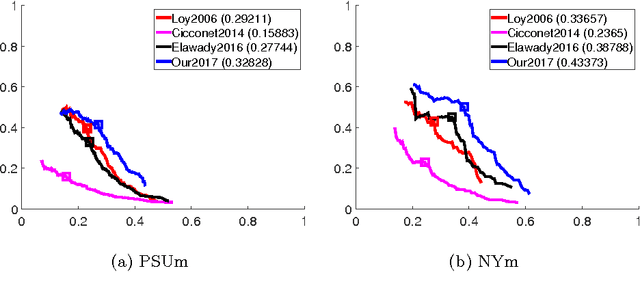
Abstract:Symmetry is an important composition feature by investigating similar sides inside an image plane. It has a crucial effect to recognize man-made or nature objects within the universe. Recent symmetry detection approaches used a smoothing kernel over different voting maps in the polar coordinate system to detect symmetry peaks, which split the regions of symmetry axis candidates in inefficient way. We propose a reliable voting representation based on weighted linear-directional kernel density estimation, to detect multiple symmetries over challenging real-world and synthetic images. Experimental evaluation on two public datasets demonstrates the superior performance of the proposed algorithm to detect global symmetry axes respect to the major image shapes.
Joint Color-Spatial-Directional clustering and Region Merging (JCSD-RM) for unsupervised RGB-D image segmentation
Sep 06, 2015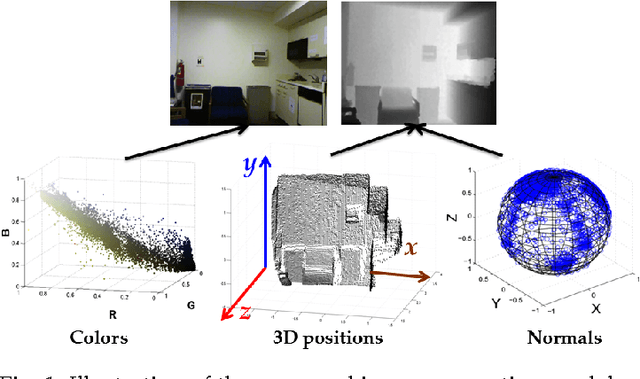
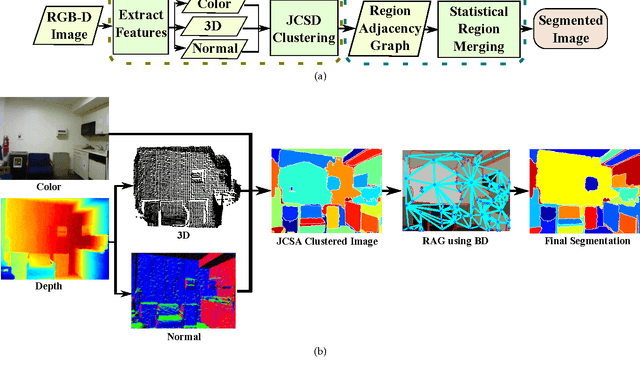

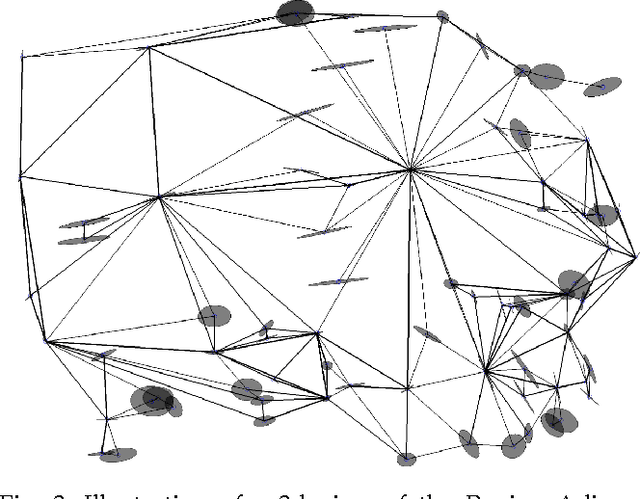
Abstract:Recent advances in depth imaging sensors provide easy access to the synchronized depth with color, called RGB-D image. In this paper, we propose an unsupervised method for indoor RGB-D image segmentation and analysis. We consider a statistical image generation model based on the color and geometry of the scene. Our method consists of a joint color-spatial-directional clustering method followed by a statistical planar region merging method. We evaluate our method on the NYU depth database and compare it with existing unsupervised RGB-D segmentation methods. Results show that, it is comparable with the state of the art methods and it needs less computation time. Moreover, it opens interesting perspectives to fuse color and geometry in an unsupervised manner.
 Add to Chrome
Add to Chrome Add to Firefox
Add to Firefox Add to Edge
Add to Edge